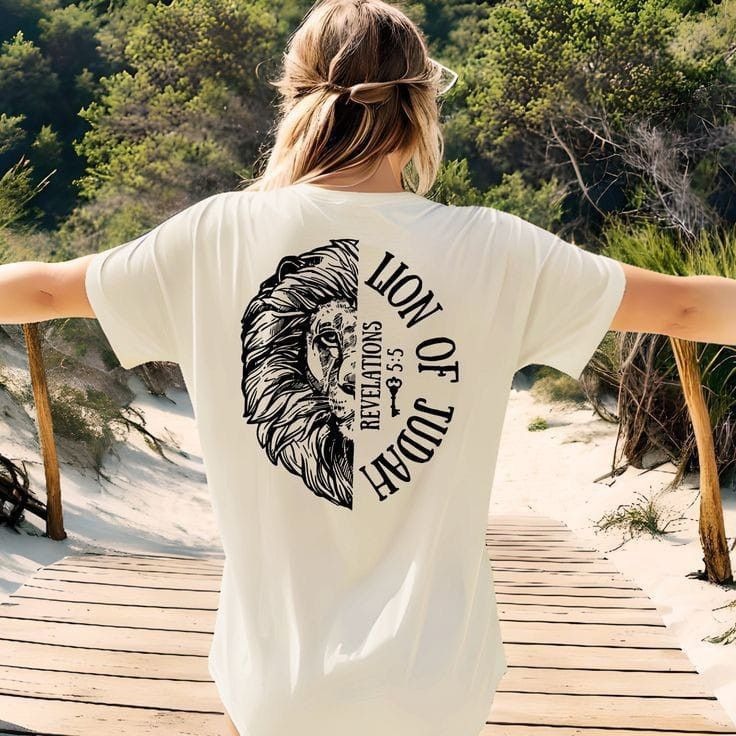In the vast panorama of human apparel, few garments can claim the universality and enduring relevance of the T-shirt. At first glance, it appears deceptively simple: a tube of fabric shaped by two armholes and a round or V-shaped neckline, hemmed at the shoulders, sleeves, and waist. Yet behind this unassuming silhouette lies a tapestry of technological innovation, cultural revolutions, economic forces, and personal storytelling. More than just a garment, the T-shirt has become an emblem of comfort, identity, protest, fashion, commerce, and even scientific aspiration. Its trajectory, from rough cotton knits to smart textiles, mirrors the evolution of industry and society itself.
The precursors to the modern T-shirt surfaced in the late nineteenth century, when laborers and sailors sought relief from rigid, heavy uniforms in sweltering climates. A single-piece undergarment known as the union suit, crafted from wool or cotton jersey, featured short sleeves and detachable bottoms. By the First World War, the top half of this suit—an effervescently comfortable undershirt—became standard issue for U.S. Navy personnel. Unlike the coarse wool tunics soldiers once wore beneath their uniforms, these lightweight cotton shirts soaked up sweat, dried overnight, and allowed unrestricted movement. Soldiers returning home continued wearing them as undershirts and, more surprisingly, as outerwear beneath open work shirts or jackets. This subtle shift, witnessed in Main Street America, gradually changed public perception: what was once hidden under layers became acceptable on the surface.
The crucible of mid-century fashion cast two legendary icons—Marlon Brando and James Dean—into the pantheon of style pioneers. In films such as A Streetcar Named Desire (1951) and Rebel Without a Cause (1955), these actors appeared clad in plain white crew-neck T-shirts, their bare torsos slung casually and provocatively against the camera’s gaze. Young audiences, captivated by the effortless cool these stars exuded, began emulating the look, sealing the T-shirt’s place as an emblem of youthful rebellion and self-assertion. No longer just an underlayer, the white T-shirt became a statement in itself, signaling nonconformity, authenticity, and raw emotion.
Simultaneous to this cultural shift were rapid advances in textile machinery and fiber science. The introduction of tubular circular knitting machines enabled manufacturers to produce seamless jersey fabrics, reducing labor costs and eliminating uncomfortable side-seam twisting. The advent of ribbed neckbands, reinforced stitching, and enzyme-washed finishes elevated durability and introduced pre-distressed softness that consumers coveted. By the 1970s, inexpensive synthetic fibers like polyester infiltrated the market. Initially scorned for their plasticky feel, performance finishes—moisture-wicking, antimicrobial, quick-drying—transformed polyester blends into athletic staples. Cotton-polyester blends became ubiquitous, striking a compromise between natural comfort and man-made resilience. Elastane (spandex) blends further contributed body-contouring stretch, paving the way for slim-fit and compression styles.
While the fabric and fit of the T-shirt evolved, its function expanded dramatically. The flat front and back panels provided the perfect canvas for graphic printing. What began as small runs of political slogans and band logos in the 1960s mushroomed into a full-blown merchandising industry. Silkscreen printing shops dotted urban backstreets, churning out garments bearing psychedelic rock art for concerts, bold revolutionary slogans for antiwar protests, and cheeky pop-culture riffs for college campuses. In the 1980s and 1990s, advancements in plastisol inks and heat-transfer processes introduced new textures and color depths. Photorealistic direct-to-garment printers emerged in the 2000s, democratizing high-resolution imagery on cotton fabrics and enabling print-on-demand enterprises to flourish.
Parallel to these mass-production techniques, handcrafted dye methods—tie-dye, batik, ice-dye—experienced cyclical revivals. Each T-shirt processed through dip-dye vats, wax resist, or shibori clamps became truly one-of-a-kind. Artisans celebrated the serendipity of color bleed and pattern variation, marketing limited-edition small batches to consumers seeking authenticity in an increasingly digital age. Embroidery, once reserved for polo shirts and denim, made its way onto jersey knits as thread-bare logos, appliqués, and puff-stitch effects lent tactile depth that printing alone could not achieve.
Beyond craftsmanship, the T-shirt’s role as a communicator of identity and beliefs cannot be overstated. In political movements from the civil rights era to modern climate activism, protesters have donned T-shirts printed with succinct, powerful messages. A single line of text—“I Am a Man,” “Make Love, Not War,” “There Is No Planet B”—scrawled across chests at marches, becomes both personal declaration and collective rallying cry. These shirts, captured in news footage and social-media posts, amplify voices far beyond the streets, reaching global audiences in milliseconds.
Entertainment franchises harness this magnetic power, licensing character artwork, iconic imagery, and branded slogans to an eager fan base. Movie premieres, comic-conventions, and gaming expos become merchandising bonanzas, as devotees purchase commemorative tees—sometimes for dozens of dollars apiece—to wear as badges of allegiance. Limited runs, collectible variants, and exclusive drops leverage scarcity psychology, fueling hype and aftermarket resales that can triple or quadruple initial retail prices.
The economics of T-shirt production and distribution are as layered as the garment’s design history. At one extreme, fast-fashion conglomerates leverage vertically integrated supply chains and ultra-efficient logistics to churn out millions of low-cost T-shirts annually. They employ predictive analytics to forecast trends and ship new styles to retail floors within weeks, harnessing consumer hunger for the next viral meme or color block silhouette. Critics decry the environmental and ethical toll of this “produce-and-dispose” model: heavy water usage in cotton farming, chemical effluent from textile dyeing, carbon emissions from international shipping, and labor practices in underregulated factories.
Conversely, a counter-movement champions transparency, craftsmanship, and circularity. Ethical basics brands unveil cost-breakdowns for each shirt—detailing yarn origin, factory labor wages, overhead, and profit margin—inviting consumers to make informed purchasing decisions. Organic and recycled fibers gain market share as GOTS and Fair Trade certifications assure that cotton fields are pesticide-free and workers receive fair compensation. Some companies implement take-back programs, collecting used T-shirts to be mechanically shredded and respun into low-quality yarns for industrial textiles or upcycled into new fashion items. Others pioneer chemical recycling processes that decompose polyester into its monomers for reuse, closing the loop and reducing reliance on virgin petrochemicals.
In parallel, manufacturing technologies chart a course toward hyper-local, on-demand production. Digital knitting machines—capable of knitting, shaping, and even printing color patterns in a single pass—prepare to decentralize factories. Imagine a boutique studio where customers choose fabric, fit, and graphic design on a touchscreen, then watch as the T-shirt materializes stitch by stitch within hours. Such a model reduces overproduction, shortens delivery time, and reclaims design agency from mass marketers.
The intersection of fashion and technology extends beyond manufacturing into the very science of what a T-shirt can do. Textile researchers embed conductive threads into knit structures, creating e-garments capable of sensing biometrics: heart rate, respiration, muscle activation. Wearable health monitors, previously bulky electronics strapped to limbs, fit invisibly into a soft fabric that hugs the body. Phase-change materials, borrowed from aerospace engineering, regulate temperature by absorbing or releasing heat as ambient conditions shift. Photovoltaic inks and micro-solar cells adhere to panels on the shoulder or chest, capturing sunlight to trickle-charge smartphones and wearable devices. Even haptic actuators—a mainstay of VR gloves—integrate into sleeves, whispering directional cues for visually impaired navigators or delivering subtle feedback during interactive performances.
Beyond performance, the T-shirt continues to reflect and shape global cultural currents. In Japan, the graphic T-shirt scene—fueling subcultures from Harajuku street-wear to punk rock—has influenced Western designers for decades. Brands like BAPE and Neighborhood blend manga-style art, military camo motifs, and vintage Americana into hybrid garments that command cult followings. In India, T-shirts featuring Bollywood heroines, cricket legends, and religious symbols saturate both urban boutiques and rural bazaars, offering an affordable means for individuals to display their passions and faith. West Africa’s wax print panels find new life when integrated into the back or sleeves of jersey T-shirts, juxtaposing traditional batik patterns with contemporary cuts. Latin American activists, in turn, harness T-shirts as visual records of protest, printing images of disappeared loved ones or bold slogans in resistance to authoritarian regimes.
Fashion stylists and everyday wearers alike mine the T-shirt’s versatility for wardrobes that span seasons and occasions. Layered beneath blazers and cardigans, a crisp white tee softens formal ensembles, injecting a dose of relaxed informality. Paired with distressed denim, bombers, or leather jackets, a graphic T-shirt punches up a street-wear look that blurs the line between high fashion and urban grit. Tucked into midi skirts or tailored shorts, the same tee metamorphoses into a smart-casual essential. Cropped cuts, knotted hems, and raw edges offer DIY flair, empowering wearers to tweak factory designs to their personal tastes. Seasonal accessories—from chunky scarves to statement necklaces—can entirely transform a basic T-shirt, proving its enduring role as the fashion world’s ultimate chameleon.
As the global population urbanizes and lifestyle norms grow increasingly casual, demand for comfortable, reliable basics shows no sign of abating. The challenge facing designers and industry leaders is how to balance this insatiable appetite with imperatives for sustainability, equity, and innovation. Which factories will survive the shift toward localized, digitally driven production? Which fibers will meet the trifecta of performance, environmental stewardship, and cost-effectiveness? How will intellectual property flow in a world where digital design files travel faster than physical garments?
Perhaps most interesting, the democratization of design tools—3D rendering software, AI-powered trend forecasting, online design platforms—means that the next wave of T-shirt innovators may come from unexpected quarters. Independent artists in remote corners of the globe can now upload their artwork to print-on-demand sites that reach customers on every continent. Social-media micro-influencers can spark viral trends with a single photo. Crowdsourced design competitions yield limited-edition tees that capture the zeitgeist in ways no corporate focus group ever could.
In the end, the story of the T-shirt is far from finished. It remains a mirror reflecting humanity’s technological prowess, social struggles, creative passions, and commercial ambitions. It is a canvas for art and advocacy, a laboratory for materials science, and a wardrobe essential that transcends class, gender, and geography. From the rough-hewn cotton knits of naval uniforms to the intelligent fabrics of tomorrow’s wearable devices, the T-shirt endures as a testament to our collective ingenuity. Unstoppable in its simplicity, yet boundless in its expression, the T-shirt stands ready to adapt once more—to cradle bodies, broadcast messages, harvest energy, monitor health, and perhaps, in ways we cannot yet imagine, redefine what it means to wear our stories on our sleeves.

